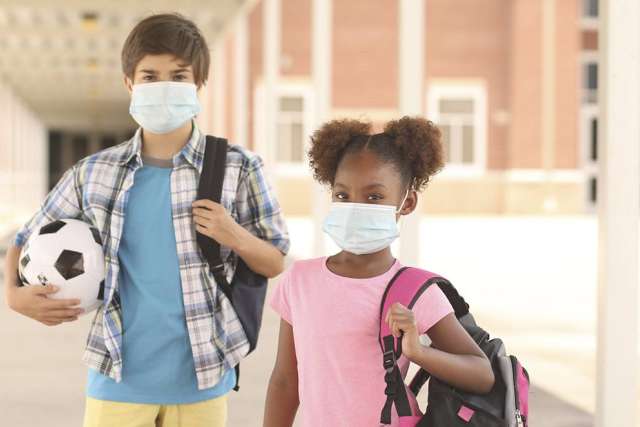As schools across the state begin to share their plans for reopening, concern is growing over how to safely protect children, their families and teachers as COVID-19 surges throughout California and elsewhere.
The alternative to children returning to the classroom is remote learning, an option that Los Angeles Unified School District has announced it will implement. But that, too, presents its own challenges for families.
Nava Yeganeh, MD, a UCLA pediatric infectious disease specialist at UCLA Mattel Children's Hospital who serves on several school COVID-19 task forces, shares her advice about the precautions that are necessary to create a safe learning environment for children and their families this fall.
Q: Will it be safe for children to go back to school this fall?
A: Schools should follow infection-control protocols created by the California Department of Public Health, the Centers for Disease Control and Prevention and the American Academy of Pediatrics in order to create a safe environment for students, faculty and staff. If schools can implement appropriate infection-prevention measures, the benefits for children of returning to in-person instruction in the classroom are, I believe, immeasurable.
COVID-19 does not seem to directly affect the health of children in the same way it affects the health of adults — the evidence to date suggests that young children are less likely to transmit the virus to adults compared to adult-to-adult or adult-to-child transmission — but we do know that not having in-person school can create an important health gap for kids. Schools provide not only education, but also food and safety, as well as resources for children with special needs. And in school, there is adult supervision that can pick up on and report signs of abuse.
Q: What are the biggest concerns about keeping kids at home?
A: There are several deficiencies to distance learning. If the home does not have a computer or adequate access to the internet, for example, it is a poor environment for homeschooling. If there is not appropriate space for a child to work or an adult in the house who can oversee the child’s learning, the virtual model doesn’t work. Having resources such as a computer and internet access often are linked to being in a home that is financially secure. Thus, children from homes with economic resources will benefit more from remote learning than those from homes without, creating a two-tiered system and educational inequity.
Q: How does the reopening of schools affect younger kids vs. older kids?
A: Data suggests that elementary school-age children have greater challenges than older kids with distance learning. They also seem to have the least amount of health consequences from COVID-19 — although a very small percentage may suffer from multisymptom inflammatory syndrome (MIS-C) — and the data also suggests that younger children are less likely to transmit the virus to adults.
Given these factors, the priority is to get younger kids back in the classroom. With younger children, it’s easier to establish a cohort with a stable group of adults and kids. For example, if there is a virus exposure within this cohort, you could potentially quarantine just the cohort rather than the entire school. This is easier to do in preschools and elementary schools, where students often don’t have to move from class to class.
Q: Is it safe for kids to play outdoors in a school setting?
A: Exercise and outdoor play is really important to a child’s development and health and should be encouraged. I think there’s a way to make it safe. Children don’t have to be hugging and holding each other to play together. Having close contact with the same surfaces, such as a soccer ball, is not how people are getting the virus. Close contact indoors without ventilation over a prolonged period of time is primarily how the virus spreads.
Q: How do we keep teachers and administrators safe at schools?
A: We have to focus on keeping adults safe. Adults are often the transmitters and the ones who are getting sick. It’s important to decrease spaces where adults have to be together, to provide masks and, possibly, face shields, and to encourage physical distancing. That means no crowded indoor teacher lounges or in-person meetings. I also would advocate that parents be dissuaded from routinely entering the campus.
Q: What can parents do to help protect their kids?
A: It’s important for kids to understand that the virus is serious and that proper hygiene is important. I recommend that parents do a screening with their child every morning; ask him or her how they’re feeling and make sure to reinforce the importance of good hygiene, including regular hand washing, coughing or sneezing into their elbow, keeping distance from their peers, wearing their masks and not touching their face.
Q: Flu season is coming up. How can families prepare?
A: It’s very important that children receive all their regularly scheduled vaccines. We are seeing low vaccination rates, which is concerning. The flu, for example, is arguably more dangerous than COVID-19 for children. Plus, co-infection is common in pediatrics, and in order to mitigate the risk of having more than one virus at a time, it is very important to stay on top of the recommended childhood vaccinations.




